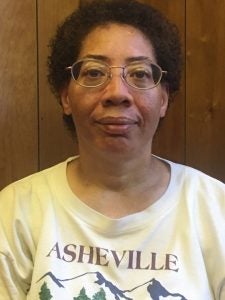Patricia Bath: A woman of many firsts
Published 9:47 am Wednesday, February 28, 2018
I want to introduce you to Patricia Era Bath, who is a woman of many firsts.
On Nov. 4, 1942, Bath was born in Harlem, New York, to Rupert and Gladys Bath. Rupert was a Trinidad immigrant who was a newspaper columnist, merchant seaman and the first black man to work for the New York City subway as a motorman. Gladys was a descendant of African slaves and worked as a housekeeper to help fund her daughter’s education. Patricia’s parents inspired her academics and encouraged her to learn about other cultures. You could say it was in her genes, being the first of many accomplishments. Although she fought against racism, sexism and poverty, she rose to academic and professional excellence in her life.
Receiving her first microscope set as a young child fostered Patricia’s love of math and science. Her teachers saw gifted attributes and encouraged them. These gifted talents played out at Charles Evans Hughes High School where she received her diploma in only two-and-a-half years. There were no black doctors in her neighborhood, and none were accepted in many medical schools. Patricia applied for and won a National Science Foundation scholarship while in high school, which led to her research project at Yeshiva University and Harlem Hospital Center on the connection between cancer, nutrition and stress; this led to her concentration in medicine. In 1960, Mademoiselle magazine awarded the teenager the “Merit Award” because her work was so impressive.
Furthermore, in 1964, Patricia received her bachelor’s degree in chemistry from Manhattan’s Hunter College. In 1968, Patricia received her doctorate from Howard University College of Medicine. While there, she was president of the Student National Medical Association and received fellowships from the National Institute of Health and National Institute of Mental Health. Also, Patricia interned at Harlem Hospital Center and served as a fellow at Columbia University. While traveling in 1967 in Yugoslavia, studying children’s health, she became aware of how unequal eye care treatment was for minorities and the poor; this resulted in a much higher rate of blindness among her black and poor patients. As a physician, Patricia was determined to combat this issue in that she persuaded her Columbia professors to operate on black patients at the Harlem Center at no cost. She spearheaded this “community ophthalmology,” which brought necessary eye care to the underserved population. Patricia was the first African-American to serve as a resident in ophthalmology at New York University from 1970-73.
Subsequently, Patricia taught at the Jules Stein Eye Institute at UCLA and Charles R. Drew University of Medicine and Science and became the first woman on staff at the Eye Institute. In 1978, Patricia co-founded the American Institute for the Prevention of Blindness, serving as president. Patricia, in 1983, became the first woman on its honorary staff. This woman of many firsts served as professor of ophthalmology at Howard University’s School of Medicine and professor of telemedicine and ophthalmology at St. George’s University. She was also among the co-founders of the King-Drew Medical Center ophthalmology training program. In addition, Patricia is an international lecturer as well as author of more than 100 papers.
Patricia is the first African-American woman doctor to receive a patent for medical purposes. She has four of them (three were for Laserphaco Probe). In 1988, the Laserphaco Probe made dissolving cataracts painless while removing them. The device will irrigate and clean the eye, which will make it easy to insert a new lens to treat eye disease. In 2000, she was granted a patent for an ultrasound technology device to treat cataracts. Hunter College inducted Patrica in 1988 into its “hall of fame,” and in 1993, Howard University named her as a “pioneer in academic medicine.”
As you can see, Patricia, amid the obstacles of poverty, racism and sexism, became a woman of many firsts in medicine to elevate blacks and the poor in receiving adequate eye care. Even after treatment, she continues to set the bar high in the medical field.
Judy Moore is a tour guide and public relations liaison at the Central High Museum. She can be reached at ju.mo39@live.com.



